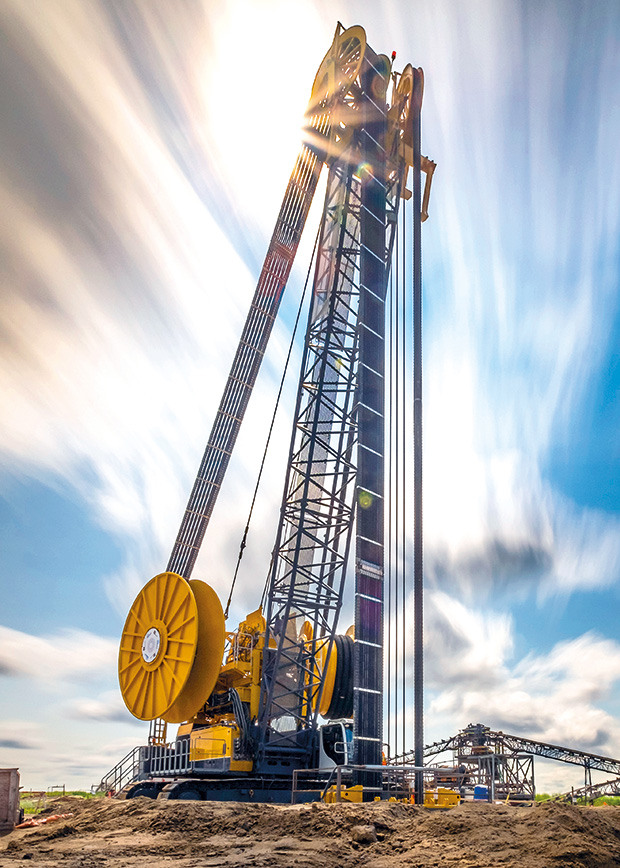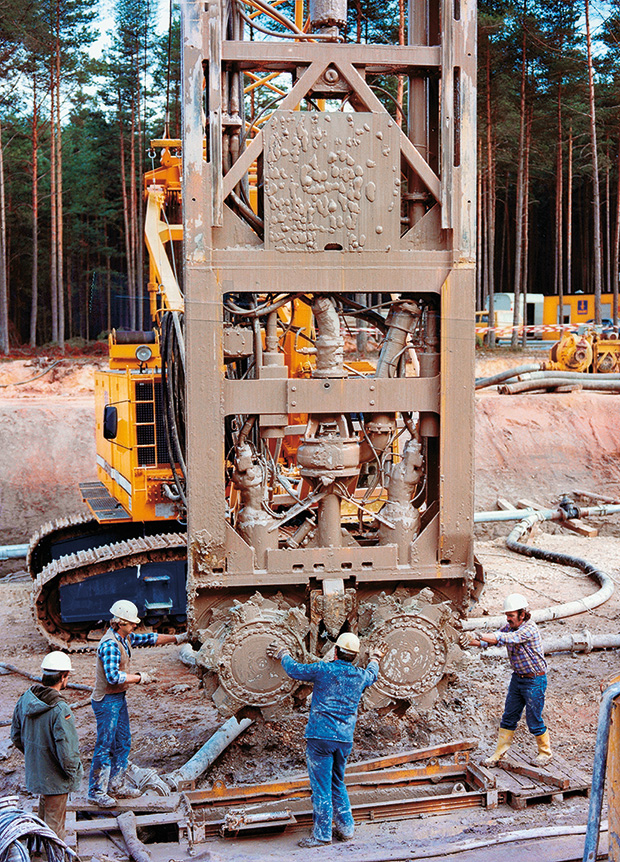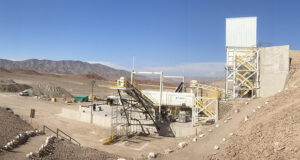Since the mid-1980s, hardly any other method has changed specialist foundation engineering as markedly as the development of diaphragm wall equipment. One milestone in this process was the introduction of the first Bauer trench cutter, which was used in 1984/85 to seal the Brombach Reservoir in Franconia (Figure 1). In just four months, this innovation conceived by Bauer engineers was designed, constructed and brought to the site – with resounding success: Despite some initial difficulties, the prototype was used to construct a wall 60 cm thick and 40 m deep. “This ‘technical adventure’ marked the start of a true success story, which has repeatedly gone beyond the limits of what was previously feasible and that is far from over,” says Leonhard Weixler, head of the Diaphragm Wall Equipment division at BAUER Maschinen GmbH. Since 1985, he has overseen the development of Bauer cutter technology in various roles.
Special applications for Bauer cutters

Fig. 2. Depth record: In 2019, a depth of 251.4 m was reached for the first time with a Bauer cutter. Photo: Bauer
In the following years, cutter technology at Bauer advanced in great strides – “always highly pragmatic, but also at times very bold and creative,” recalls Leonhard Weixler. The first cutters were sold to Japan and Turkey. In collaboration with a French partner, the maneuverable City-Cutter BC 15 was created for work in tight spaces and with working heights of just 5 m. New applications were later opened up with the Low Headroom machine that Bauer introduced on the market at the end of the 1990s. This was used to execute the encompassment of a subway station in Singapore underneath an existing airport building. Another machine of this type was used in China a few years later, in the Yeleh Dam project, to construct the sealing wall for a reservoir dam in a narrow tunnel.
Then in 2014, the CBC 40 Silent Cutter ushered in a new generation of equipment for projects in urban environments. The equipment performed impressively when it was used for a subway project in Singapore, particularly due to its low noise emissions, but also thanks to its compact dimensions, which were possible because of measures such as attaching the hydraulic power pack on the side. Next in summer 2019, an impressive depth record was set by a BAUER BC 50 cutter on an MC 128 duty-cycle crane: During a mining project in Canada, cutter excavation was for the first time carried out up to a depth of 251.4 m (Figure 2).
Standard equipment in specialist foundation engineering
“In addition to all these special applications – some of them in difficult geological conditions – our cutters have also become established as reliable standard equipment in specialist foundation engineering, for example in the construction of diaphragm walls that can serve as retaining structures, for cut-off wall construction or as a foundation element,” emphasizes Leonhard Weixler. In addition, cutters also play an important role in soil mixing techniques such as Cutter Soil Mixing (CSM): Cutting wheels loosen the soil and mix it with a slurry to form a homogeneous soil-bentonite mortar. The method can be used to construct cut-off walls and retaining structures in various soil types, including hard soils.
Over the decades, Bauer has built and sold hundreds of cutter and CSM units. “The reliability of our equipment is largely also based on our decades of experience,” says Leonhard Weixler. “And our customers can also depend on that.” In recent years, however, the orientation for new developments and enhancements in Bauer cutter technology has been provided not only by customer requirements, but also by two major trends. “The topics of urbanization and sustainability are becoming increasingly important. They require proactive solutions, such as our first electrically powered cutter unit based on a BAUER MC 96 duty-cycle crane, which we presented in 2019 at the Bauma in Munich,” continues Leonhard Weixler.
New applications
Finally, Bauer presented an innovation last year that opens up entirely new applications for the future of diaphragm wall construction: the electrically powered BAUER Cube System (Figure 3). This was developed precisely in the dimensions of a container. As a result, it can be easily used in tunnels with a diameter of just 3 x 3 m, a major advantage for cutter projects in densely populated large cities, for example. “The BAUER Cube System can be used precisely where the diaphragm wall needs to be constructed: underground,” summarizes Leonhard Weixler. This means that large-scale closures of urban areas could potentially be a thing of the past. The impact of construction sites on traffic, businesses, and residents (in particular) are minimized, even during daytime use. Another advantage is that the electric drive system considerably reduces the ecological disturbance of a cutter site. When it comes to logistics, the system’s compact dimensions are another major advantage. Instead of expensive heavy haulage, individual elements of the system can be easily transported to their place of deployment as conventional containers. “All in all, the BAUER Cube System sets new standards when it comes to sustainability in cutter technology,” concludes Leonhard Weixler.
Further information:
BAUER AG
www.bauer.de


